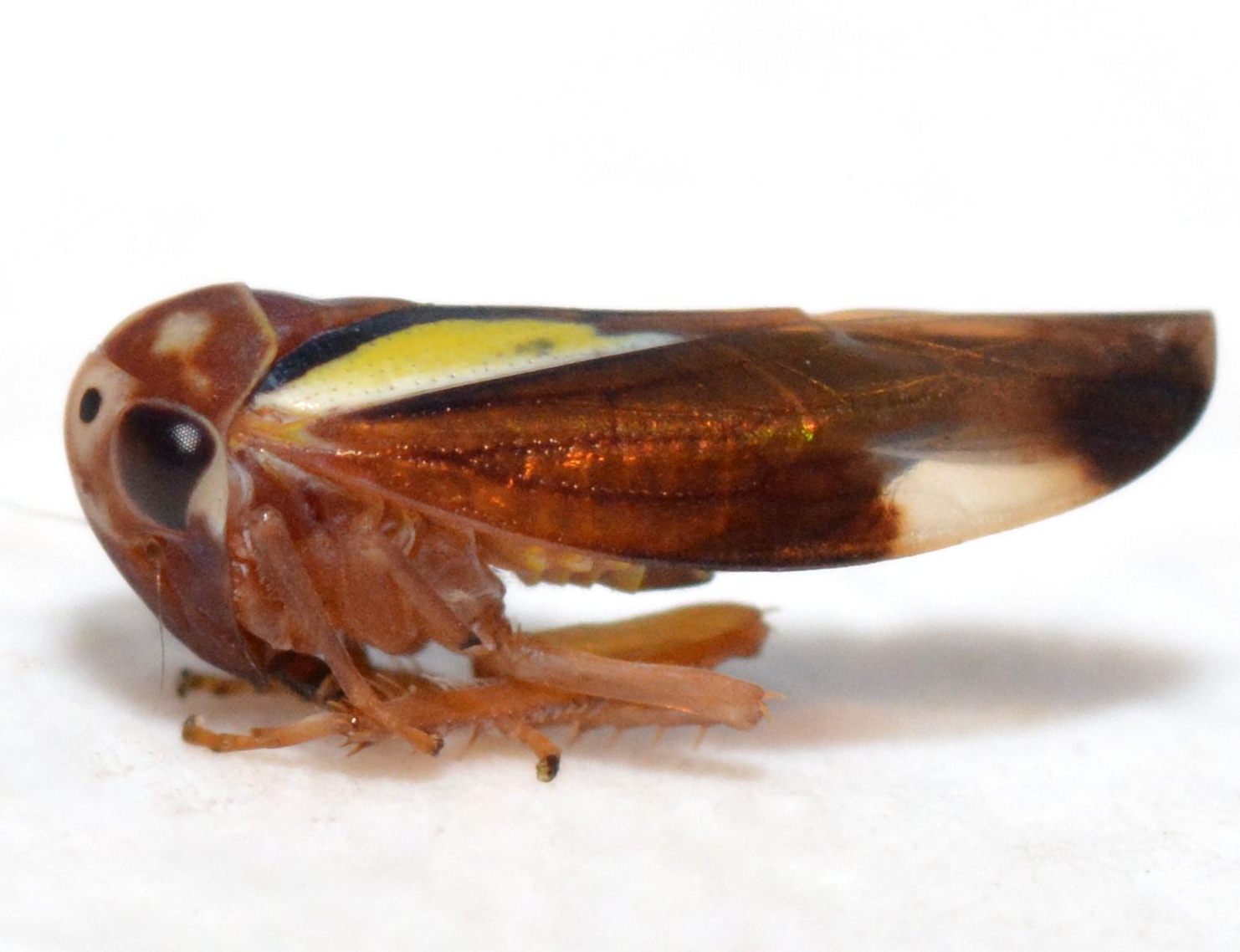Description: A very distinctive species, dark reddish-brown overall with bold yellow markings and long, straight-sided forewings. The head is pale, with two bold black spots on the evenly-rounded margin; the male antennae are simple and lack a disc. The pronotum has a pale spot on either side of a broad pale midline, and the pronotum and scutellum are typically otherwise yellow; however some males have an entirely black pronotum and scutellum. The face of male is yellow with a brown stripe down the median line, whereas the face of the female is mostly brown with a yellow spot beneath each ocellus. There is a very broad yellow streak on the clavus (upper portion of the wings), bordered by black, and a pale rectangular spot on the costa of the wings; otherwise, the wings are reddish-brown. While adults are typically cinnamon brown, some individuals can be bluish to black: 1, 2. The male subgenital plates are elongate and narrow, truncated at the apex. The female pregenital sternite is strongly, roundedly produced on the posterior margin with no notches but a slight median emargination. Adult males are 4.8 to 57 mm long, females are 5.1-6.2 mm; the width of the head in males is 1.7 to 1.8 mm, in females 1.7 to 2.1 mm. (Freytag 1965, Beirne 1956, DeLong 1948)
Nymphs are ant-mimics and range in color from red to black (same as ants); see: 1, 2. |

 »
»


 »
»
